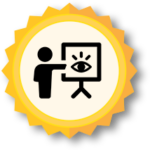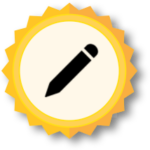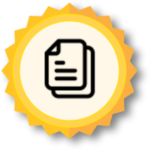Infusing Entrepreneurial Mindset in Your Discipline
 Overview and Introduction: The WHAT and WHO
Overview and Introduction: The WHAT and WHO
As detailed in the entrepreneurial mindset (EM) QRG, EM is a problem-solving approach that begins with curiosity about our changing world, connecting information from various resources to gain insight, and identifying unexpected opportunities to create value. Integrating EM in engineering education on a national scale is a focus of the Kern Entrepreneurial Engineering Network (KEEN).
ASU has partnered with KEEN for several years, including institutionalizing EM in many Fulton curricular courses and extracurricular programs. Many classroom resources and activities have been created by a group of ASU faculty who served as Robust Entrepreneurially Minded Leaders (REMLs). Faculty have also shared activities through KEEN cards on Engineering Unleashed, a virtual platform from the network. REML content and KEEN cards can include activities, lessons, slides, rubrics, or other teaching resources.
There are several other Quick-Reference Guides on EM strategies and topics (e.g., customer discovery, connections) posted on the Learning and Teaching Hub site. However, this guide will provide a more robust list of assignments and resources, specific to engineering disciplines.

 Implementation and Timing: The WHEN, WHERE, and HOW
Implementation and Timing: The WHEN, WHERE, and HOW
- The REML group worked for several semesters (2020-2021) to infuse EM in activities, projects, and assignments in the Fulton Schools of Engineering. This group also aligned several EM learning objectives with these activities, which are mentioned throughout. Engineering students are likely already doing many activities that could be tied to the entrepreneurial mindset. Students who explore multiple solution paths, gather feedback from their stakeholders to modify an idea, and describe how their solution adds value from multiple perspectives are on their way to utilizing their technical skills with an entrepreneurial mindset. See several examples of Robust EM Leader Resources (in Dropbox) below:
As mentioned, many engineering faculty create KEEN cards (or pages with resources) on Engineering Unleashed, a virtual platform for the Kern Entrepreneurial Engineering Network. KEEN cards can include activities, lessons, slides, rubrics, or other teaching resources from any member of the network. A few examples of exemplar KEEN cards by discipline below.
Kern Entrepreneurial Engineering Network (KEEN) Cards (Engineering Unleashed)
- All/General Engineering – Course Modules Providing Interdisciplinary Perspectives on the Grand Challenges for Engineering by Amy Trowbridge & Haolin Zhu: These course modules include many resources and content to have students think holistically about 21st century problems and their solutions. The first module includes a section on developing solutions to interdisciplinary societal challenges and the sixth covers impact of engineering solutions with societal impact of technology frameworks.
- Computer Science: “Why are we making this?” Customer Discovery in a Capstone Course by Ryan Meuth: This module introduces students to customer discovery principles and gathering requirements of an engineering project through introductory online lecture content, a follow-up quiz, and in-class value identification and customer active learning activities.
- Civil Engineering: How is the Yellow Interval Determined for a Signalized Intersection? By Yingyan Lou: This module examines the theories and assumptions behind the yellow light calculation, and explores possible modifications through storytelling, class discussion, and an individual research project.
Note: The majority of KEEN cards require the user to be logged in to view on the Engineering Unleashed platform. It is free to create an account – faculty can then connect with other ASU faculty or faculty across the network once signed up.
Other Tips for Infusing the Entrepreneurial Mindset
- Share the WHY. Explain to students why you are incorporating these entrepreneurially minded activities. Share your own experiences or how these skills are needed for industry. Students who are provided opportunities early on in their engineering education to practice their entrepreneurial skill sets have significantly higher perceptions of engineering professions and engineering entrepreneurship skills needed to be successful [1].
- Use EM to add active learning. If infusing EM into a written assignment or project is not realistic, EM can be a great lens to add active learning strategies to your class time. Start small with simple additions of polling, think-pair-share, or group discussions around curiosity, connections, or creating value.
- Consider how to assess. There are 17 EM learning objectives (EM@FSE Indicators) that have been used to assess the entrepreneurial mindset at ASU. Check out the KEEN Card Six EM Classroom Assessment Best Practices by Gary Lichtenstein to learn more.

 Rationale and Research: The WHY
Rationale and Research: The WHY
Engineers who not only utilize their technical engineering skills, but also employ an entrepreneurial mindset are well-rounded engineers prepared with the necessary knowledge and skill sets to be successful in industry.

 Additional Resources and References
Additional Resources and References
-
- Want to learn more? See a full list of entrepreneurially minded content here, created by Robust Entrepreneurially Minded Leaders (REMLs) at ASU. These resources are linked with Canvas Commons, to allow faculty to import directly to their Canvas course. Faculty can also request another discipline be added to this guide. The Learning and Teaching Hub will do our best to continue to curate valuable resources for the community.
Acknowledgments: This guide would not be made possible without the time and effort to create a robust library of resources from the Robust EM Leaders. Thank you to the facilitators, leaders, mentors, and faculty engaged in the project’s efforts.
References
[1] S. Dabbagh and D. A. Menascé, “Student Perceptions of Engineering Entrepreneurship: An Exploratory Study,” Journal of Engineering Education, vol. 95, no. 2, pp. 153-164, 2006. DOI: 10.1002/j.2168-9830.2006.tb00886.x.